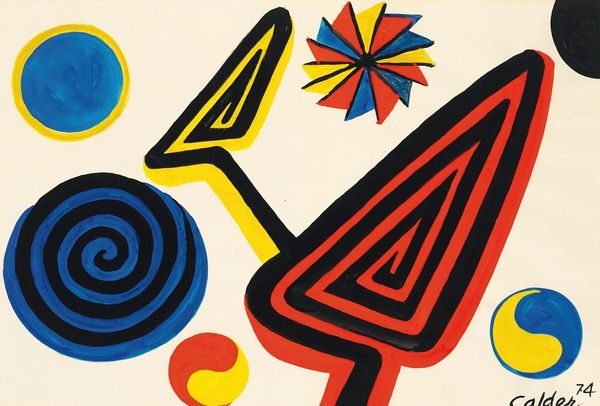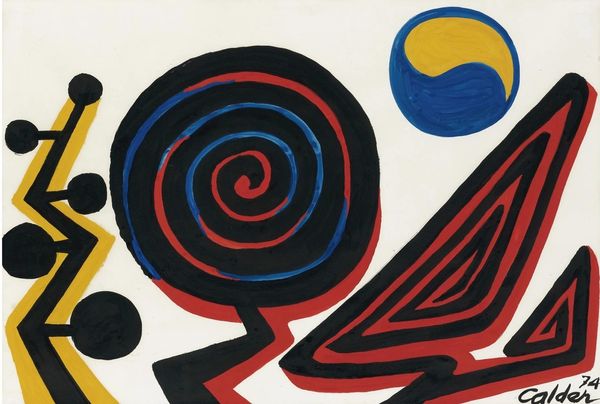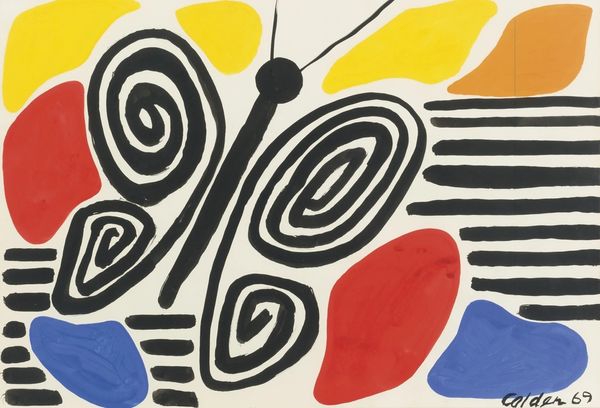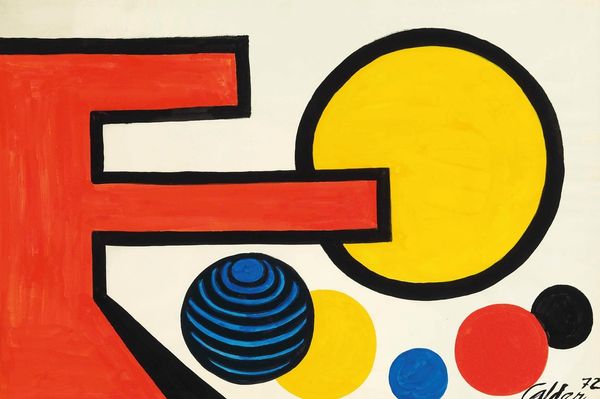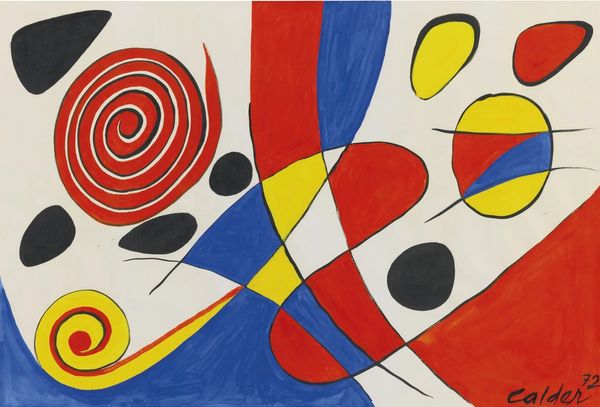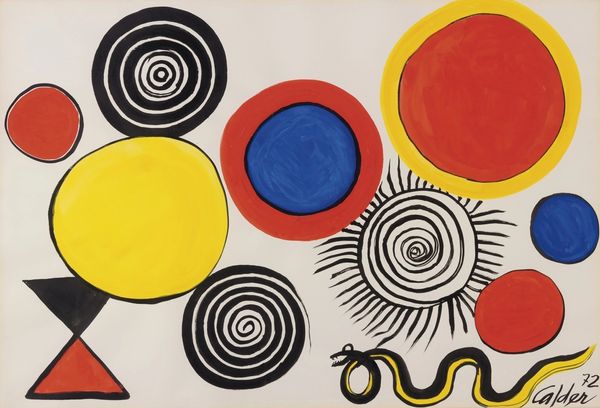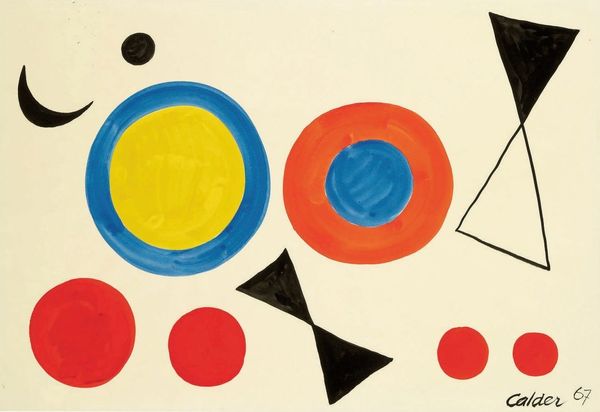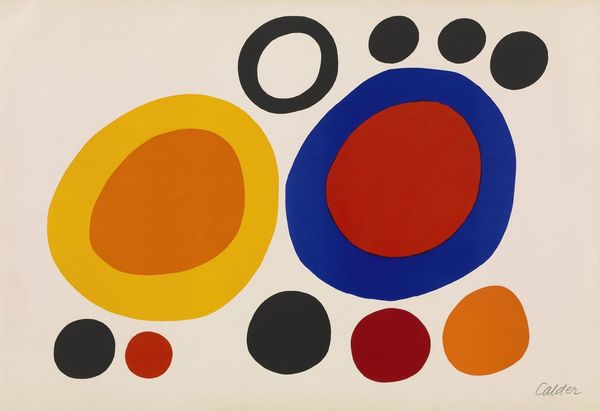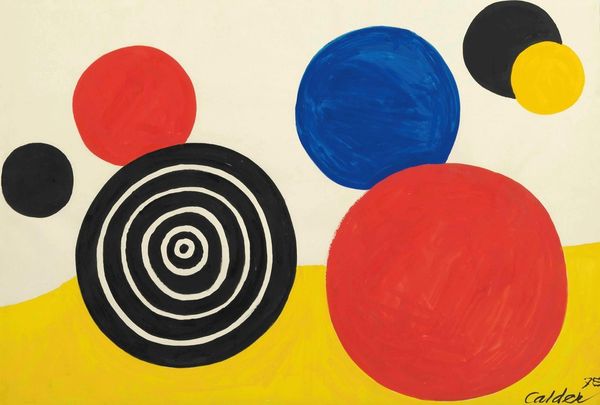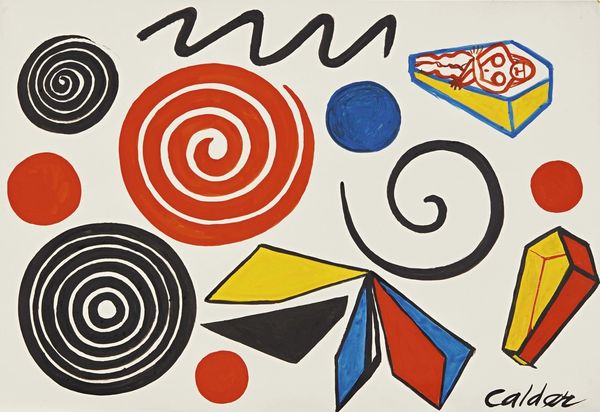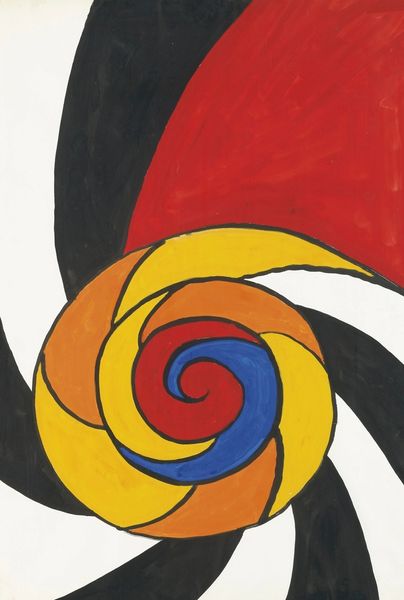
acrylic-paint
#
popart
#
pop art
#
acrylic-paint
#
abstract
#
form
#
geometric
#
pop-art
#
line
#
modernism
Copyright: Modern Artists: Artvee
Editor: We're looking at Alexander Calder's "Serpent rouge et serpent noir," created in 1970 with acrylic paint. The bold shapes and colors give it such a playful, almost childlike energy. What strikes you when you look at this piece? Curator: What I see is Calder engaging in a visual dialogue about power, visibility, and form. Look at the serpentine forms: one red, one black, in dynamic tension. It brings to mind the push and pull of contrasting ideologies present in society. Consider how Calder uses abstraction here – does it conceal or reveal underlying societal structures? Editor: That's a powerful reading. I hadn't considered that tension. So, the contrast isn't just visual? Curator: Precisely. Think about the context: 1970. Social unrest, the rise of identity politics, the fight for civil rights. The simplicity of the forms allows Calder to explore these complex themes through shape and color, prompting viewers to confront their own assumptions. How do you read the title now, knowing this background? Editor: The "snakes" feel less whimsical. Perhaps they symbolize opposing forces constantly circling each other. Curator: Exactly! It moves beyond simple aesthetic enjoyment and becomes a visual commentary on the friction inherent in any social landscape, rendered with deceptively simple tools. Editor: I never would have considered such a loaded interpretation from something so seemingly lighthearted. It shows the impact art can have when seen through the lens of history and theory. Curator: Indeed, and that’s how artworks speak to our present and shape our future!
Comments
No comments
Be the first to comment and join the conversation on the ultimate creative platform.

